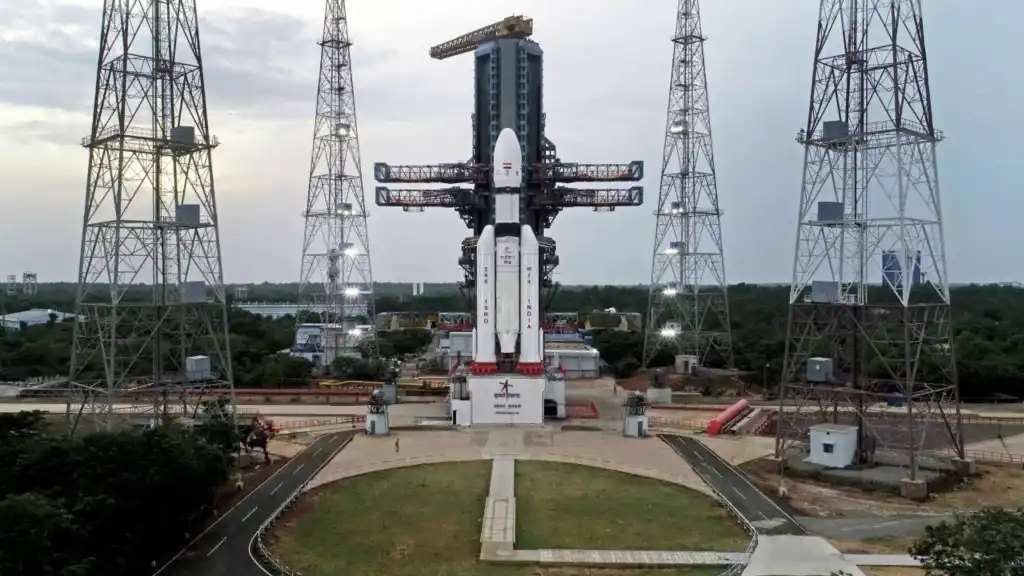Skip to content World Spain Russia China Middle East Africa Asia Europe International United States of America Select an edition Science and space

Chandrayaan, which means “moon chariot” in Sanskrit, lifted off from the Satish Dhawan Space Center in Sriharikota, in the southern state of Andhra Pradesh, shortly after 2:30 p.m. local time (5:00 a.m. ET).
Crowds gathered at the space center to watch the historic launch, and more than a million people followed it on YouTube.
This is India’s second attempt at a soft landing, after the failure of its previous attempt with Chandrayaan-2 in 2019. Its first lunar probe, Chandrayaan-1, orbited the moon and then deliberately crashed into the lunar surface in 2008.
Chandrayaan-3, developed by the Indian Space Research Organization (ISRO), consists of a lander, a thrust module and a rover. Its goal is to land safely on the lunar surface on August 23, collect data and conduct a series of scientific experiments to better understand the composition of the moon.
Only three other countries have accomplished the complex feat of landing a spacecraft on the surface of the Moon: the United States, Russia, and China.
Indian engineers have been working on it for years. Their goal is for Chandrayaan-3 to land near the challenging terrain of the moon’s unknown south pole.
India’s first mission to the Moon, Chandrayaan-1, detected water molecules on the lunar surface. Eleven years later, Chandrayaan-2 successfully enters lunar orbit, but its rover crashes into the surface. He was also to explore the lunar south pole.
At the time, Indian Prime Minister Narendra Modi praised the mission’s engineers despite the failure and vowed to continue working on India’s space program and its ambitions.
Ahead of Friday’s launch, Modi said that day will “always be etched in gold letters when it comes to India’s space sector”.
“This amazing mission will carry the hopes and dreams of our nation,” he said in a message on Twitter.
India has since spent about $75 million on its Chandrayaan-3 mission.
Modi said the rocket would travel more than 300,000 km and reach the moon in the “next few weeks”.
The mission to the moon, a milestone after decades of work by India
India’s space program dates back more than six decades, when it was a newly independent republic and a very poor country suffering from the bloody partition.
When it launched its first rocket into space in 1963, the country did not live up to the ambitions of the United States and the Soviet Union, which were far ahead in the space race.
Today, India is the world’s largest country by population and its fifth largest economy. It has a thriving youth population and is home to a growing hub of innovation and technology.
Modi has caught up with India’s space ambitions.
For the leader, who rose to power in 2014 with a rhetoric of nationalism and future greatness, India’s space program is emblematic of the country’s growing prominence on the world stage.
In 2014, India became the first Asian country to reach Mars, when it put the Mangalyaan probe into orbit around the red planet for $74 million, less than the $100 million Hollywood spent on the space thriller “Gravity.”
Three years later, India launched a record 104 satellites in a single mission.
In 2019, Modi announced in a rare televised address that India had shot down one of its satellites, in what it claimed was an anti-satellite test, becoming one of only four countries to do so.
In the same year, then ISRO President Kailasavadivoo Sivan stated that India plans to establish an independent space station by 2030. At the moment, the only space stations available to expedition crews are the International Space Station (a joint venture of several countries) and China’s Tiangong space station.
Rapid development and innovation has made space technology one of the most attractive sectors for investors, and world leaders seem to have taken notice.
Last month, when Modi met President Joe Biden in Washington, the White House announced that the two leaders had sought greater cooperation on the space economy.
And India’s space ambitions do not stop at the Moon or Mars. ISRO has also proposed sending an orbiter to Venus.

“Future teen idol. Hardcore twitter trailblazer. Infuriatingly humble travel evangelist.”




:quality(85)/cloudfront-us-east-1.images.arcpublishing.com/infobae/BNGH73UCKQAZSQPCODUWO2BE5Y.jpg)





